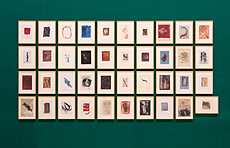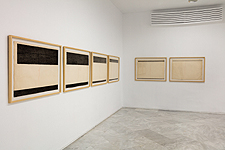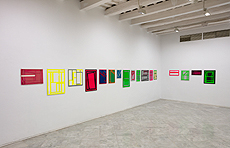![]()
On Paper
Dates: September 29, 2022 - April 9, 2023
Curator: Juan Antonio Álvarez Reyes
Coordinator: Javier Corro Olmo
Space: East Cloister
Ignasi Aballí · Alfonso Albacete · Louise Bourgeois · José Manuel Broto · José Luis Castillejo · Mar García Ranedo · Cristina Iglesias · Concha Jerez · Abraham Lacalle · Miki Leal · Eva Lootz · Ruth Morán · Rosalind Nashashibi · Guillermo Pérez Villalta · Richard Channin Foundation · Antonio Rodríguez Luna · Inmaculada Salinas · Raquel Serrano · Soledad Sevilla · Juan Suárez
Over the last decade, the Centro Andaluz de Arte Contemporáneo has planned presentations of its permanent collection as if they were temporary exhibitions, organizing them by theme, period, gender or other criteria. Although we have not exhausted these different ways of arranging our holdings, last year we introduced a new one related to artistic media, which we will explore in upcoming presentations. In any event, the aim of every presentation, then and now, has always been to offer a clear intention, a fresh perspective or a unique approach capable of enriching the conventional core of museal practice.
While the last instalment explored sculpture in its expanded field, this new showing of the collection is dedicated to works on paper, which in contemporary practices encompass a wide range of aesthetic possibilities and formal results. The term “work on paper” has traditionally referred to drawing in its different forms—a quick, immediate outlet for expression or, in contrast, the premeditated rehearsal of a preliminary sketch—but in recent decades it has practically become a genre in its own right, moving into an expanded field that includes the serial, installative, pictorial or sculptural, among many other possibilities.
Nearly all the works in the show were acquired by or donated to our museum within the last ten years and are now being presented here. In the exhibition, we have attempted to create groups and counterpoints among different artists, as the most decisive thing may be what is put on paper, whether they are questions related to our past or our identity, the practice or languages of art, the biographical and generational, species or spaces or the place of representation. In short, this show has the potential to spark a debate about the role of the museum, and how it can fulfil that role through its holdings by way of a particular support or a specific creative medium.
ADDITIONAL DOCUMENTATION |



